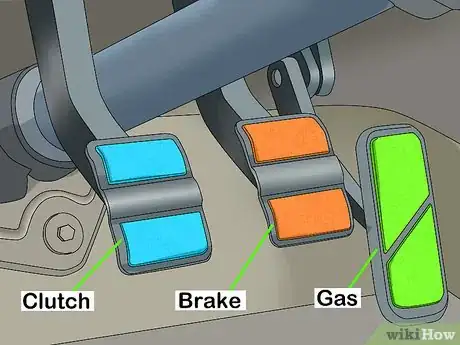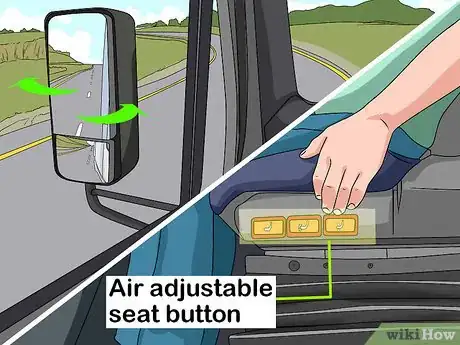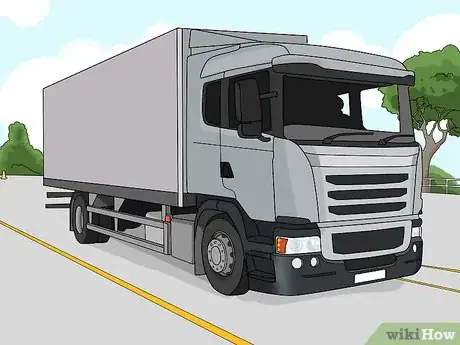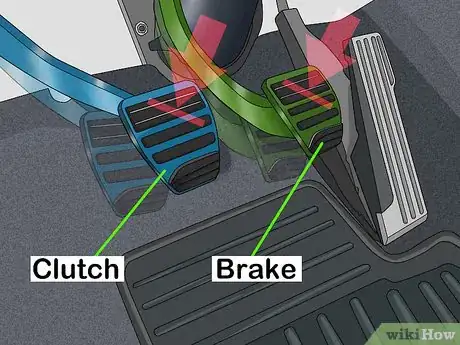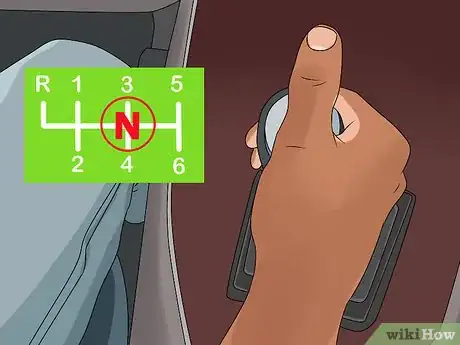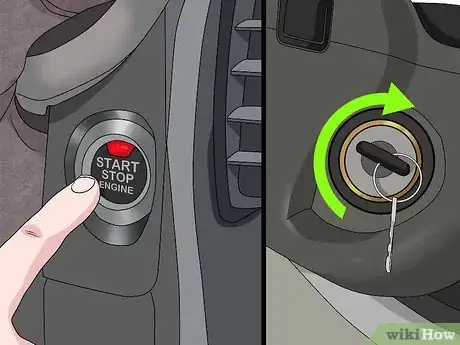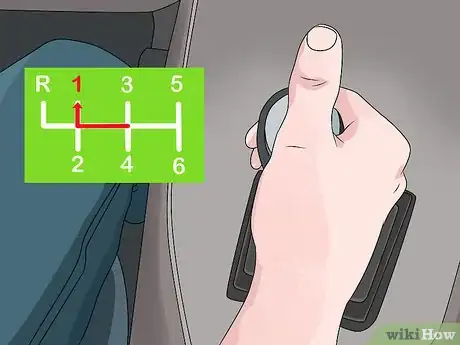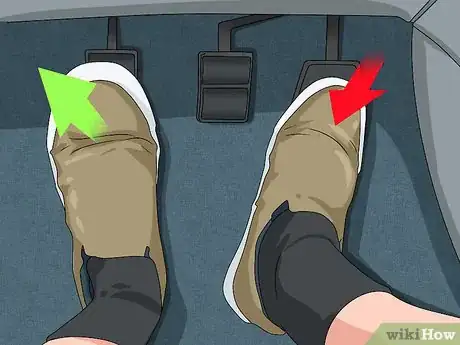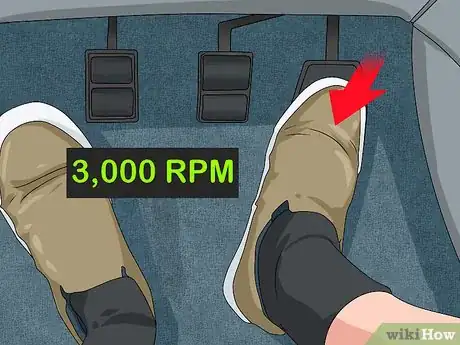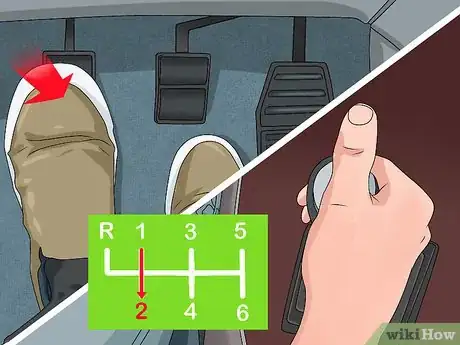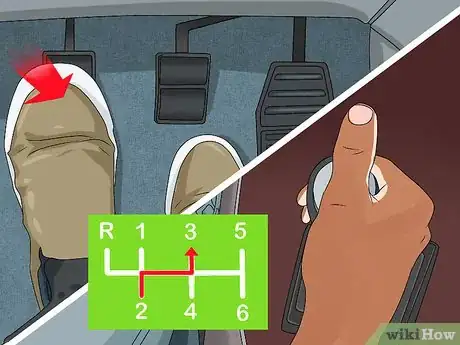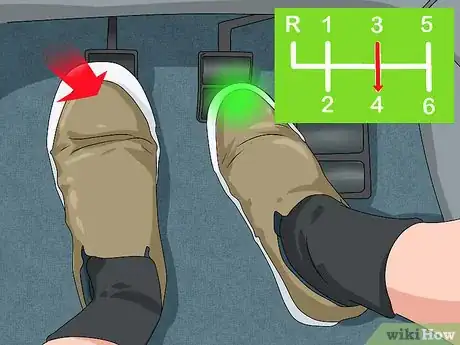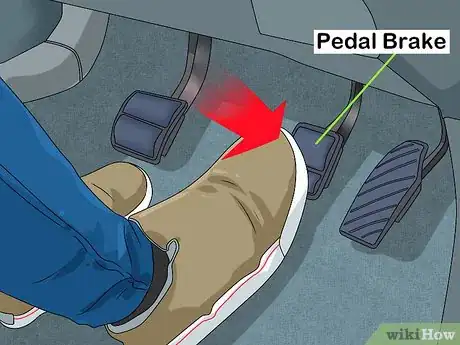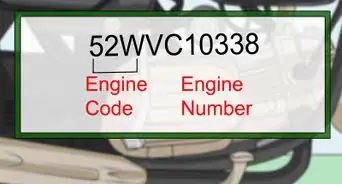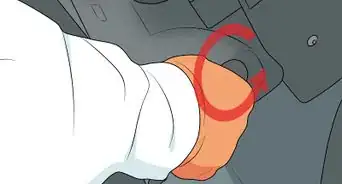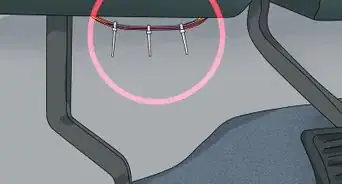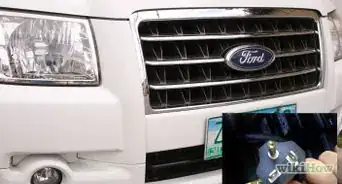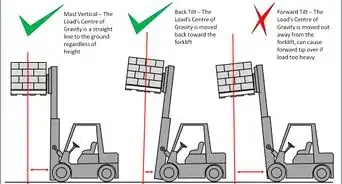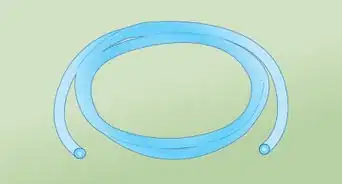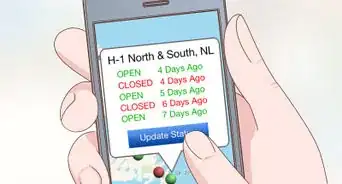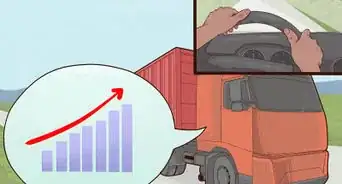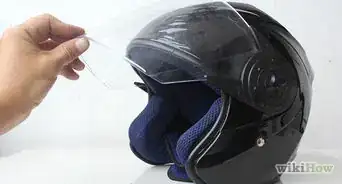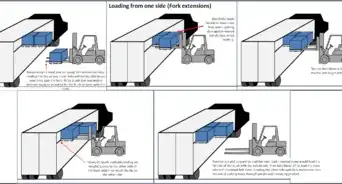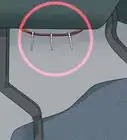This article was co-authored by Ibrahim Onerli. Ibrahim Onerli is a Driving Instructor and the Manager of Revolution Driving School in New York City. His mission is to make the world a better place by teaching safe driving. Ibrahim trains and manages a team of over eight driving instructors. He specializes in teaching defensive driving and stick shift driving.
wikiHow marks an article as reader-approved once it receives enough positive feedback. In this case, 94% of readers who voted found the article helpful, earning it our reader-approved status.
This article has been viewed 92,024 times.
Driving a manual transmission truck can be intimidating at first, but will get easier as long as you practice the proper technique. Before you try to drive, you should get acclimated to the differences between an automatic and stick shift truck. Then, it’s just a matter of pressing the right pedals and driving in the proper gear.[1] Initially, driving might seem hard, but if you take your time and practice, you can be driving a stick shift truck in no time!
Steps
Acclimating to a Stick Shift as a First-Timer
-
1Find the clutch, gas, and brake pedals. The gas pedal is the skinny pedal on the right side. The brake pedal is the wider pedal that’s in the middle of the 2 other pedals. The clutch is the leftmost pedal in your truck. Each time you want to change the gear, you’ll have to press down on the clutch pedal.[2] Using the clutch is typically the most challenging part of driving stick shift for most people.[3]
- You should use your right foot to press the gas and brake pedals.
- Use your left foot to press down on the clutch.
-
2Find your stick shift and look at the image on the top of it. The stick shift should be to the right of your seat (for trucks with left side steering wheels). Most stick shifts will have the gear numbers printed on top to help you locate them.[4]
- Typically first gear will be left and up, second gear will be left and down, third gear will be centered and up, fourth gear will be centered and down, fifth gear will be right and up, and reverse will be right and down.
- Pushing the stick shift into the center will put the truck in neutral.
Advertisement -
3Adjust your seat and mirrors so you can see around you. Position your rearview and side mirrors so that you can see around your truck. Eliminate as many blind spots as you can to prevent crashing. Also, move your seat so that you feel comfortable reaching the pedals but can still see out of the front windshield.
- Remember to buckle your seatbelt before you start the truck.
-
4Practice driving on flat ground. Manual trucks will roll whenever you put them in neutral if you don't have the brakes engaged. This makes practicing on a hilly road difficult. When you first start off, try to find flat ground to practice on.
Starting the Truck
-
1Press the clutch and brake pedals all the way down. The clutch needs to be pressed down so that you can move the stick shift into neutral. The brake pedal or emergency brake should also be engaged so that your truck doesn’t roll when you put it in neutral. Use your left foot to press down on the clutch and use your right foot to press down on the brake.[5]
- If your emergency brake is on, you don’t have to push your brake pedal as hard as you normally would.
-
2Push the stick shift into the center to put the truck into neutral. If you don’t put the truck in neutral when you start it, you’ll stall out. With the brake and clutch depressed, move the stick shift into the center of its axis to put it in neutral. You should be able to wiggle the stick around, and it shouldn’t feel like it’s locked into place.[6]
-
3Push the ignition button or turn the key to start the truck. With the stick shift in neutral and both pedals still depressed, start your truck. For a traditional ignition, simply turn the key clockwise in the ignition. Newer trucks may require you to press a button instead.[7]
-
4Push the stick shift into first gear. With the brake and clutch still pressed, move the stick shift to the left and then up. Wiggle the stick a bit to make sure that it’s locked into place. You have now successfully started up the truck and are ready to start driving.[8]
- Release the brake. Disengage your emergency brake, if it’s on, and lift your foot off the brake pedal. Your truck can now move forward.[9]
Driving and Changing Gears
-
1Press down slowly on the gas while lifting off on the clutch with your left foot. Lift off the clutch and press down slowly on the gas with your right foot in one fluid motion to make your truck move forward. Don’t slam down on the gas too hard or you may stall out the truck.[10]
- If you stall out, simply turn off the truck and repeat the process over again.
-
2Continue to press down on the gas until the truck reaches 3,000 RPM. Look down at the different meters behind your steering wheel. Typically RPMs will be on the right-hand side. Once the needle on the RPM meter reaches 3,000, you need to switch to the next highest gear.[11]
- As you drive the truck, you’ll hear the engine rev and overwork as you move faster.
- Staying in a gear that’s too low for the speed that you’re going may damage your transmission.
-
3Push down on the clutch with your left foot and put the truck into second gear. While you’re still in motion, slowly lift off the gas while pushing down the clutch and put the stick shift down and left, or in the second gear position. This is the same method that is used to switch to the higher gears.[12]
- You won’t be able to move the stick shift without pressing down on the clutch first.
- This move should happen in one fluid motion.
-
4Lift off the clutch and press down on the gas. Once your truck is in second gear, re-engage the gas and lift your foot off of the clutch. You should now be driving in second gear.[13]
-
5Repeat the process to go to higher gears. Once you get used to driving a stick shift, you'll be able to listen to the engine and hear when you need to upshift or downshift. If you're just starting off, make sure to keep an eye on your RPMs. Everytime your RPMs reach 3,000, you should switch to the next highest gear.
- Being in the right gear will make your truck more fuel efficient.
Slowing Down, Stopping, and Reversing
-
1Downshift when you need to slow down. Downshifting helps regulate the speed of the truck and is useful if the traffic slows down in. To downshift, press down on the clutch while engaging the brake and put your truck in the next lowest gear. Once it’s in gear, let off the clutch and press down on the gas to maintain your speed.[14]
- You never really have to downshift into first gear because second gear doesn’t require high RPM.
-
2Put the stick shift into neutral when you stop. Unless you want to stall out, you need to put the truck into neutral whenever you want to come to a complete stop. To do this, press down on the clutch while letting off of the gas and push the stick into the center. Then, once the truck has been put in neutral, you can stop and start the truck’s momentum without stalling out.[15]
-
3Use the brake instead of the gas when reversing. Pressing on the gas pedal in reverse can feel jerky and fast. Instead of pressing down on the gas in reverse, use the disengaged clutch and brake to control your truck. Slowly lift off the clutch with your left foot and tap on the brake with your right foot to control the truck. This trick will work unless you’re on a steep hill, in which case you may need to apply the gas pedal.[16]
Expert Q&A
Did you know you can get expert answers for this article?
Unlock expert answers by supporting wikiHow
-
QuestionHow do you change gears smoothly when driving a stick shift?
 Ibrahim OnerliIbrahim Onerli is a Driving Instructor and the Manager of Revolution Driving School in New York City. His mission is to make the world a better place by teaching safe driving. Ibrahim trains and manages a team of over eight driving instructors. He specializes in teaching defensive driving and stick shift driving.
Ibrahim OnerliIbrahim Onerli is a Driving Instructor and the Manager of Revolution Driving School in New York City. His mission is to make the world a better place by teaching safe driving. Ibrahim trains and manages a team of over eight driving instructors. He specializes in teaching defensive driving and stick shift driving.
Driving Instructor
-
QuestionWhat are the high gears for trucks?
 Wikiuser 101qCommunity AnswerA high gear for a pickup truck would be about sixth. A semi's high gear would be about 13 or 14.
Wikiuser 101qCommunity AnswerA high gear for a pickup truck would be about sixth. A semi's high gear would be about 13 or 14.
References
- ↑ Ibrahim Onerli. Driving Instructor. Expert Interview. 18 November 2019.
- ↑ Ibrahim Onerli. Driving Instructor. Expert Interview. 18 November 2019.
- ↑ https://www.dmv.org/how-to-guides/driving-stick.php
- ↑ https://www.dmv.org/how-to-guides/driving-stick.php
- ↑ https://www.dmv.org/how-to-guides/driving-stick.php
- ↑ https://jalopnik.com/5230172/how-to-drive-a-stick-shift-in-ten-easy-steps
- ↑ https://www.dmv.org/how-to-guides/driving-stick.php
- ↑ https://www.digitaltrends.com/cars/how-to-drive-manual/
- ↑ https://www.dmv.org/how-to-guides/driving-stick.php
- ↑ https://youtu.be/3h74K39hK2U?t=1m19s
- ↑ https://www.digitaltrends.com/cars/how-to-drive-manual/
- ↑ https://www.dmv.org/how-to-guides/driving-stick.php
- ↑ https://www.dmv.org/how-to-guides/driving-stick.php
- ↑ https://jalopnik.com/5230172/how-to-drive-a-stick-shift-in-ten-easy-steps
- ↑ https://jalopnik.com/5230172/how-to-drive-a-stick-shift-in-ten-easy-steps
- ↑ https://jalopnik.com/5230172/how-to-drive-a-stick-shift-in-ten-easy-steps
About This Article
Driving a stick shift truck can be intimidating at first, but once you know the right techniques, it’ll become second nature. Starting your truck is a bit different in a stick shift truck. You’ll need to be in neutral and press the clutch down to start the engine. Some vehicles will need you to press the brake too. You’ll need to change gear whenever your engine reaches about 3,000 revs per minute. You’ll know it’s time to shift when you hear the engine working harder. All you need to do is push the clutch down, shift the stick to the next gear, and ease off the clutch while easing on the gas. Familiarize yourself with the shift pattern so you won’t need to think about it while you’re driving. For more tips, including how to use engine braking in a stick shift truck, read on!

